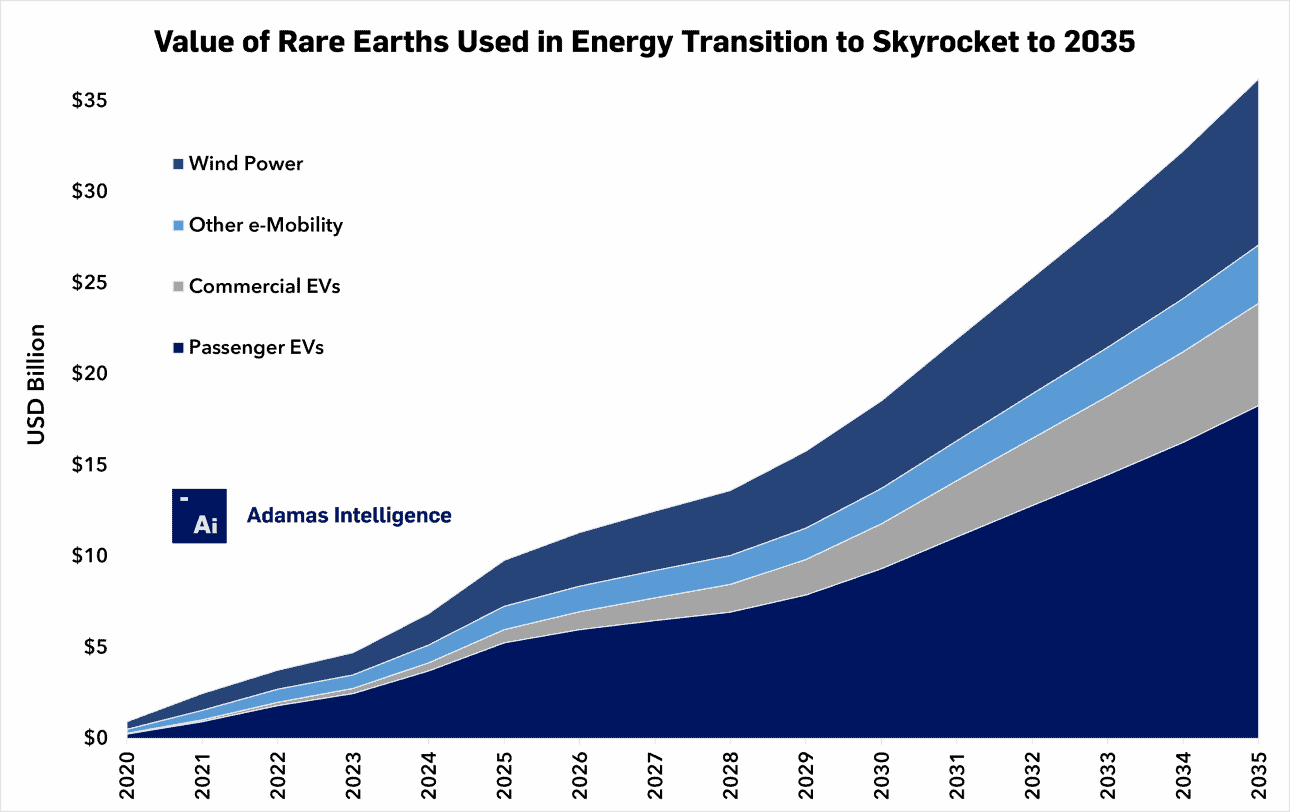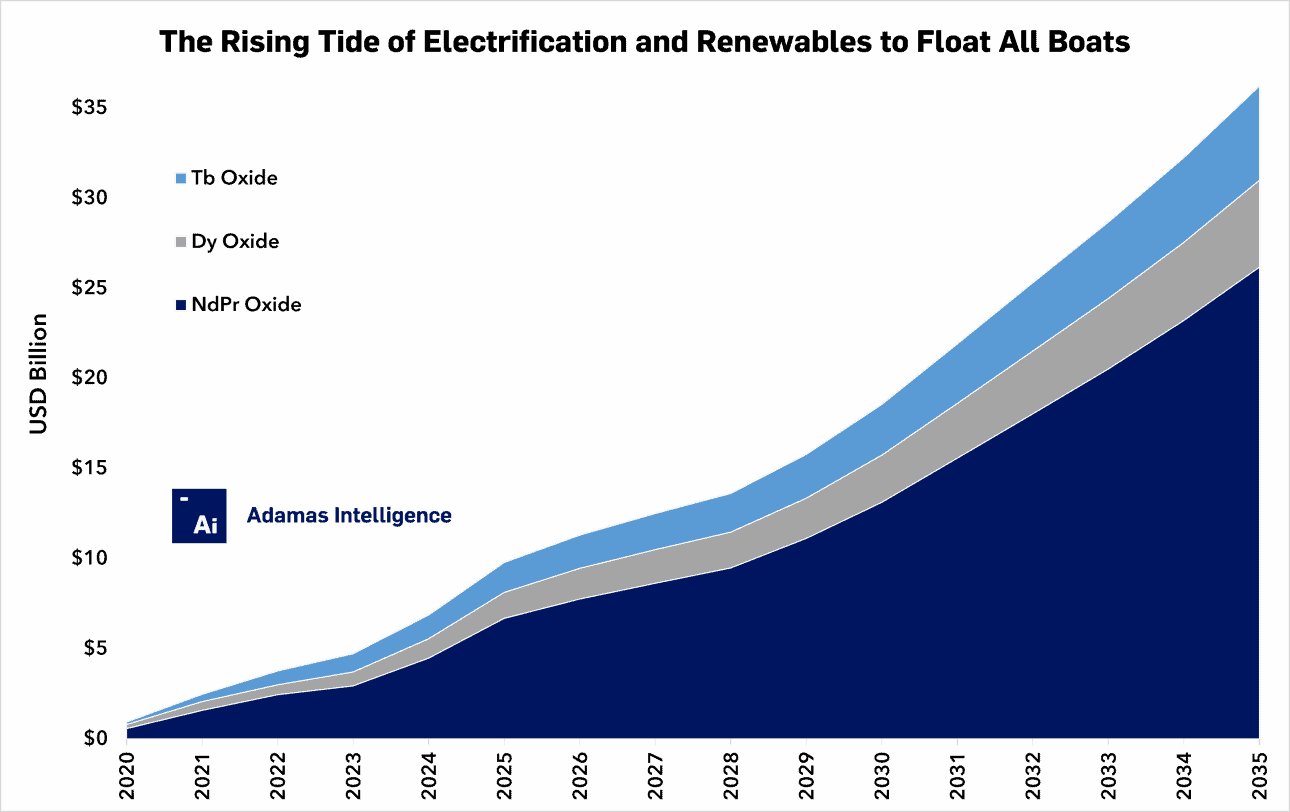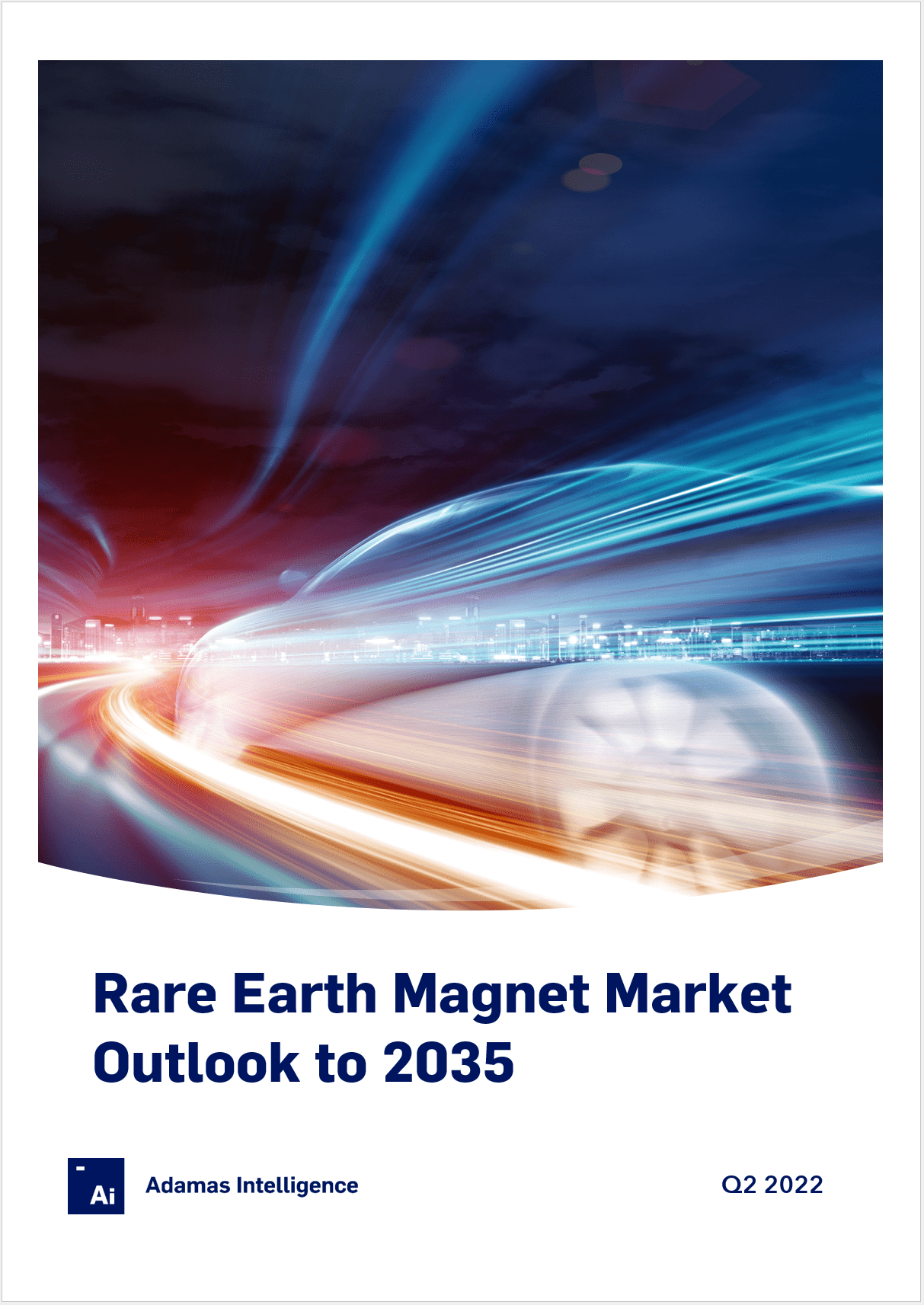The Skyrocketing Value of Rare Earths Powering the Energy Transition
Four-fold increase since 2020; another 10-fold increase expected by 2035
In 2022, Adamas Intelligence data indicates that $3.8 billion worth of magnet rare earth oxides, namely NdPr, Dy and Tb oxides, were consumed globally in NdFeB alloys for energy-transition-related applications, including EV traction motors and wind power generators.
With demand and prices soaring in recent years, the total value of rare earth oxides consumed for the energy transition each year quadrupled between 2020 and 2022. By 2035, with demand and prices expected to continue rising, Adamas projects the value of consumption will increase another 10-fold.
Passenger EV traction motors and wind power generators will fuel the greatest growth
Specifically, from 2022 through 2035, Adamas forecasts that the value of rare earth oxides consumed by energy-transition-related applications will rise at a CAGR of 19.1%, from $3.8 billion in 2022 to $36.2 billion in 2035.
This growth will be led primarily by passenger EV traction motors, which will drive over 50% of the value of consumption in 2035, followed by wind power generators, which will propel another 25%.

NdPr oxide to benefit most but the rising tide will float all boats
By oxide, NdPr consumption value is expected to see the greatest rise over the forecast period, increasing 11-fold by 2035, underpinned by strong demand growth across all applications, rising prices, and ongoing thrifting of heavy rare earth concentrations in high grade NdFeB magnets and the consequential bolstering of NdPr concentrations.
Conversely, Dy and Tb oxide consumption value is expected to increase at a slightly slower pace, rising 7- to 9-fold over the forecast period as supply scarcity and technical innovations fuel an incremental reduction in Dy and Tb use per unit of magnet.

Energy transition ‘tag-along’ applications to add billions more in market value
Alongside the energy-transition-related applications considered above are a handful of related uses of NdFeB magnets that also stand to benefit from the ongoing shift to electromobility and renewable power generation.
Within each EV are an array of micromotors, sensors and audio speakers that also, in many cases, use NdFeB magnets to minimize vehicle weight, and thereby maximize driving range and/or minimize battery costs. As such, rapidly growing EV sales globally stand not only to boost NdFeB demand for EV traction motors but also for the wealth of smaller applications pervading modern electric vehicles.
Moreover, with ever-increasing focus on energy efficiency, energy costs and related emissions by manufacturers and consumers alike, rare earths and the magnets that use them also stand to benefit from rising demand for efficient and reliable motors, pumps and compressors used in everything from industrial robots and assembly line conveyors to best-in-class white goods, air conditioners, battery powered lawnmowers and more.
The above mentioned ‘tag-along’ applications add billions more to the market outlook and serve as a testament to the importance of the energy transition to rare earths, and of rare earths to the energy transition.
More Information: Rare Earth Magnet Market Outlook to 2035
In this report, we provide a detailed overview of the global NdFeB alloy, powder, magnet and magnet rare earth oxide markets, including a breakdown of historical production, consumption and prices from 2015 through 2021. Next, we unravel the anticipated near-term impacts of the pandemic recovery on world markets and forecast global supply, demand and prices from 2022 through 2035.

Back to overview


